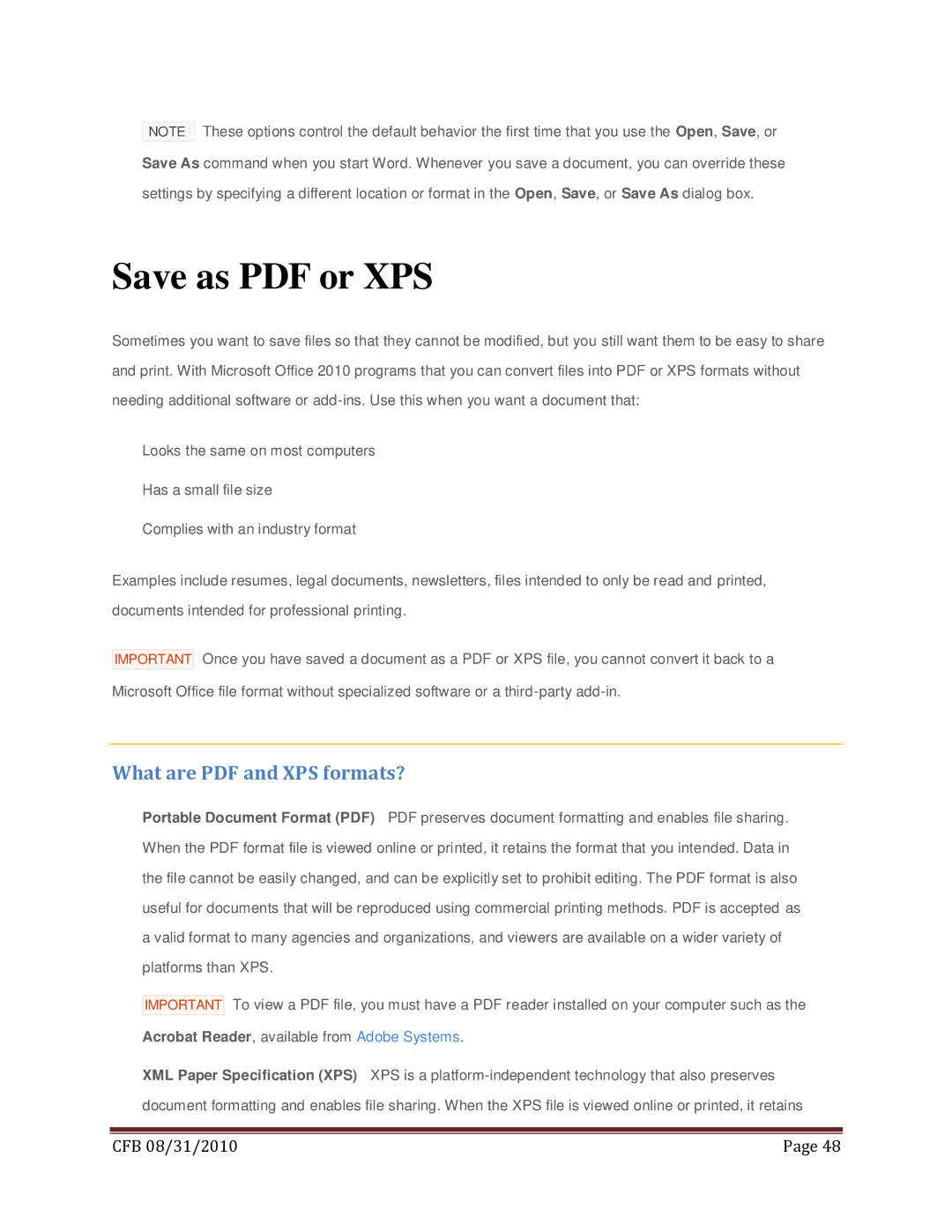
NOTE These options control the default behavior the first time that you use the Open, Save, or Save As command when you start Word. Whenever you save a document, you can override these settings by specifying a different location or format in the Open, Save, or Save As dialog box.
Save as PDF or XPS
Sometimes you want to save files so that they cannot be modified, but you still want them to be easy to share and print. With Microsoft Office 2010 programs that you can convert files into PDF or XPS formats without needing additional software or
Looks the same on most computers
Has a small file size
Complies with an industry format
Examples include resumes, legal documents, newsletters, files intended to only be read and printed, documents intended for professional printing.
IMPORTANT Once you have saved a document as a PDF or XPS file, you cannot convert it back to a Microsoft Office file format without specialized software or a
What are PDF and XPS formats?
Portable Document Format (PDF) PDF preserves document formatting and enables file sharing. When the PDF format file is viewed online or printed, it retains the format that you intended. Data in the file cannot be easily changed, and can be explicitly set to prohibit editing. The PDF format is also useful for documents that will be reproduced using commercial printing methods. PDF is accepted as a valid format to many agencies and organizations, and viewers are available on a wider variety of platforms than XPS.
IMPORTANT To view a PDF file, you must have a PDF reader installed on your computer such as the Acrobat Reader, available from Adobe Systems.
XML Paper Specification (XPS) XPS is a
|
|
CFB 08/31/2010 | Page 48 |
